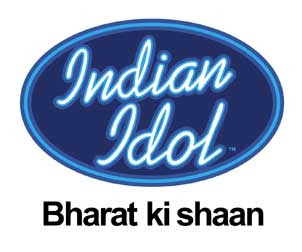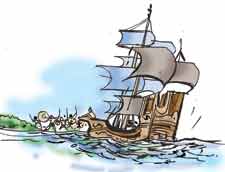By S.B. KaralliyaddaDharmapala was born to a rich aristocratic family of southern Lanka on September 17, 1864. His parents were Mudliyar Don Carolis Hewawitharana and Mallika.
Major portion of their family silver had to be spent on the uplifment of Dhamma education and the propagation of Buddha Dhamma.
Path of Dhamma
It was because one of their son Don David trod the path of Buddha Dhamma. Young David had his primary education in the Catholic Missionary School, Pettah (St. Mary’s) and St. Benedict’s Kotahena and later at the Christian Missionary School, Kotte (St. Thomas’).
He learnt the Sinhala language and Buddha Dhamma from erudite monks Ven. Migettuwatte Gunananda and Ven. Hikkaduwe Sri Sumangala Theras. Dharmapala left school to join public service as a clerk in 1883. His public service career was limited to three years when he left the service in 1886 to devote full time for religious activities joining the Theosophical Society headed by an American Col. Henry Steel Olcott.
Later he became the Secretary of the Society. By now he changed his biblical name Don David to Dharmapala Hewawitharana.
Theosophical Society
The Buddhist Theosophical Society under his guidance was able to establish Buddhist schools throughout the island which saw the birth of Ananda, Nalanda, Mahinda, Dharmaraja etc.,for boys and Visakha, Mahamaya, Sangamitta etc., for girls. He not only concentrated on education but also contributed for the uplift of the rural economy by starting vocational training centres for carpentry, masonry, handloom textiles and other rural cottage industries.
He traversed the entire length and breadth of the country propagating the doctrine of the Buddha in a specially improvised vehicle for this purpose.
Families of hill country
The families in the hill country associated with his Dhamma Yatras were late A. Ratnayake family, late Prof. Tennakoon Wimalananda’s family, Beddewela and Dolapihilla families. The living members of these families remember with nostalgia the time spent with Dharmapala who stayed with them on his Dhamma missions in the hill country.
Oldest living member
The oldest living member of Beddewela family – 96-year-old Dhatusena Beddewela and the oldest living lady of the Ratnayake family – 90-year- old sister of late A. Ratnayake, Mrs. Keppetipola of Matale recall their association with our hero in their childhood days.
The landmark in his career began when he met a Russian lady Mrs. Blavatsky with whom he went to Adayar, South India to study Theosophy.
The role in India
By this time he had studied the facts from the book “Light of Asia” by Edwin Arnold which were featured in the Daily Telegraph in London.
The facts mentioned in the book relating to the atrocious situations for the Buddhists moved Dharmapala to such an extent that he vowed to fight against such situations forming a Buddhist Protection Committee and becoming its Secretary from 1886 March to 1890.
Dhamma Convention
He participated in a Dhamma convention in Adayar. After this convention he visited Isipathana in January 1891 accompanied by a Japanese Bhikku, Koshan Gunarathana. They came to Gaya on January 22 and he kept his forehead on the ground and made this strong commitment to clear the premises from foreign domination.
The entry made in his personal diary states thus: “As soon as I touched with my forehead on the Vajrasana a sudden impulse came to my mind. It prompted me to stop here and take care of the sacred spot, so sacred that nothing in this world is equal to this place where Prince Sakyasingha gained Enlightenment
Maha Bodhi Society
This incident saw the birth of Maha Bodhi Society on April 31, 1891 under the patronage of Hikkaduwe Sri Sumangala Thero. Dharmapala became the Secretary of this organisation. It is recorded that he donated Rs. 1000 to the then Governor Sir William Manning towards the supply of rations to the poor who were hit by a famine in Lanka in 1919.
This was the same Governor who was in India when Dharmapala was ordered to leave India by the Courts. This Governor issued instructions to the Indian IGP not to give any security to Dharmapala and to secretly observe his movements in India.
Spreading of Buddhism
Buddhism spread in the whole of Asia long before Christianity and Islam. The Holy site at Isipathana was destroyed by Mohamad Ghori while Buddha Gaya, Nalanda and Wickramashila were razed to ground by Bhaktiyar Kilni. Buddhist places of worship in Kashmir were destroyed by Sikandar.
When Dharmapala visited Saranath in January 1891 it was a place for hog breading. Only an area where there was a shrine which was spared by the hog breeders. It was in January 1901 that Dharmapala was able to purchase a block of land from Isipathana.
Eight schools
Today there are eight schools managed by the Maha Bodhi Society. One of these schools was funded by the mother of our hero, who was 85-year-old at the time. The school started in June 1904 was funded by Lady Foster.
This area was known as Kasirata in the olden days and the city has had a population for over five thousand. The writer was able to enjoy the splendour of the area during a visit in March last year. This was possible only due to the untiring efforts of Dharmapala who brought back the pristine glory of the area.
Wesak Poya
He was not only able to get the Wesak Poya of May 24, 1918 gazetted as a public holiday but also was able to get a Wesak holiday for all the Buddhist children attending schools in Calcutta, Bengal and other cities.
It was Dharmapala who rescued Buddha Gaya from Saivite Mahanta. He had to go to courts on many occasions to stop Mahanta from defacing the Buddha statues. At times he was jailed as a result of his Buddhist activities. For a period of about forty years he lived in Calcutta, Benares, Buddha Gaya and other places holy to Buddhists to protect and safeguard places of Buddhist worship.
He corresponded frequently with the Governors of Bihar, Orissa, Patna and such other districts to look after the interests of the Buddhists world over.
Moolagandakuti Viharaya
Having lived in India for forty four years he participated in the second anniversary of Moolagandakuti Viharaya restoration held on November 11, 1932 with the participation of a distinguished gathering including Sri Jawaharlal Nehru his wife, daughter Indira Gandhi and sister Vijayalakshmi Pandit on January 16, 1933.
Ordaining of Dharmapala
A Seemamalaka area of 50 ft. x 50 ft. with eight stone pillars was built and Dharmapala was ordained as Ven. Siri Devamitta Dharmapala.
The then Anunayake Thera of the Malwatte Maha Viharaya Ven. Madugalle Siddharta, the two principals of Vidyodaya Pirivena, Vidyalankara Pirivena and ten other senior monks from Sri Lanka participated in this auspicious ceremony held in Benares where Ven. Siri Devamitta Dharmapala obtained Higher Ordination.
Ven. Devamitta Dharmapala lived hardly four months after this event and passed away on April 29, 1933.
The whole Buddhist world mourned the demise of this great son of Lanka. His name would be honoured and remembered by generations of Buddhists the world over.
(Some facts of this article are from the book Anagarika Dharmapala by Ven. Kahawatte Siri Sumeda Thera.)



 According to Martin Wickramasinghe, Jataka book is the best work to be introduced for world literature from Sinhalese literature. In fact Jataka tales have pervaded the local culture in many ways. Much literary research has been done on Jathaka tales too.
According to Martin Wickramasinghe, Jataka book is the best work to be introduced for world literature from Sinhalese literature. In fact Jataka tales have pervaded the local culture in many ways. Much literary research has been done on Jathaka tales too.  “Don’t worry son, you did not purposely crush the poor snail, so you would not commit a sin.” I responded to him.
“Don’t worry son, you did not purposely crush the poor snail, so you would not commit a sin.” I responded to him. 























 Binara poya day which falls within the period of Vas also marks the commencement of Sarath Season (Autumn). The month also bears significance according to the Buddhist literature as the Buddha’s visit to Thavuthisa heaven in order to preach Abhidhamma to Mathru Divya Raja too had taken place during this month.
Binara poya day which falls within the period of Vas also marks the commencement of Sarath Season (Autumn). The month also bears significance according to the Buddhist literature as the Buddha’s visit to Thavuthisa heaven in order to preach Abhidhamma to Mathru Divya Raja too had taken place during this month. 